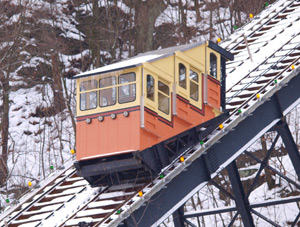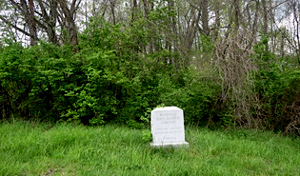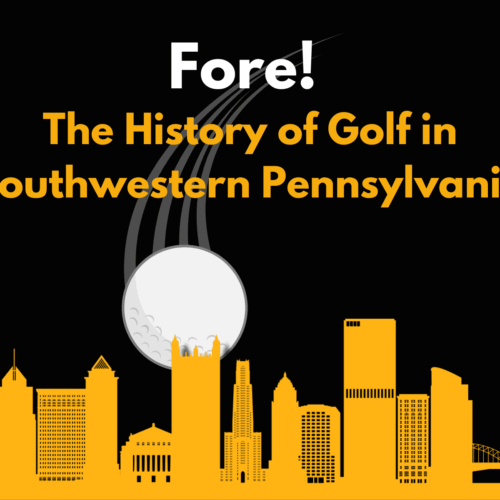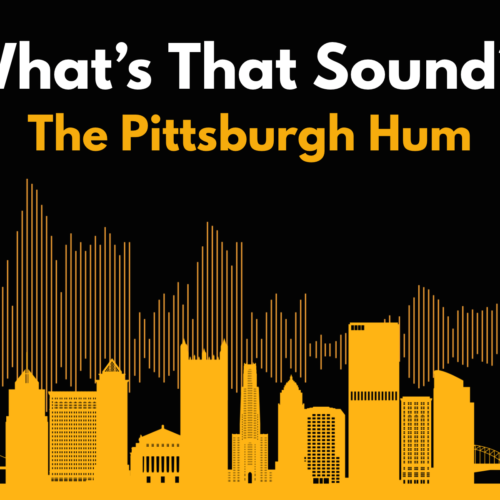
The Monongahela Incline
November 24, 2014
Collier Township & Nevillewood
November 24, 2014 The Strip District combines the hustle and bustle of a Turkish bazaar, the nightlife of Las Vegas, ethnic cuisine, the fun of a street carnival, and the atmosphere of days gone by. Pittsburgh’s Strip District is truly a place like no other.
The Strip District combines the hustle and bustle of a Turkish bazaar, the nightlife of Las Vegas, ethnic cuisine, the fun of a street carnival, and the atmosphere of days gone by. Pittsburgh’s Strip District is truly a place like no other.
Since its founding, the Strip District has been a distinctive and vital part of the community. It continues to be so today. Just a mile east of downtown, The Strip District has had more identities than an undercover agent, from incubator of early industry and industrial hub to a center for wholesale produce, delightful specialty shops, and incredible restaurants.
The Strip District runs from 11th Street, across from the David L. Lawrence Convention Center, to 33rd Street. This one-mile stretch of land connects downtown to the Lawrenceville neighborhood, and three major thoroughfares traverse the one-half-mile-square area of land: Smallman Street, Penn Avenue, and Liberty Avenue.
The History
 This parcel of land was first owned by notable Pittsburgh residents James O’Hara and George A. Bayard. In 1814, the pair established the area and named it “Northern Liberties of Pittsburgh.” It was more commonly known as Bayardstown. In 1837, the area joined the city, becoming the fifth ward.
This parcel of land was first owned by notable Pittsburgh residents James O’Hara and George A. Bayard. In 1814, the pair established the area and named it “Northern Liberties of Pittsburgh.” It was more commonly known as Bayardstown. In 1837, the area joined the city, becoming the fifth ward.
With its ideal location, hugging the Allegheny River and subsequent convenient access to shipping lanes and raw materials, the area soon became a thriving industrial center. Foundries, mills, and factories moved in.
Industrial Incubator
The Strip District became the incubator for many of the industries that helped to establish Pittsburgh as an industrial powerhouse. Immigrants from Germany, Ireland, and Poland flocked to the area seeking jobs and providing the labor for one of the most famous stories of industrial growth in American history. U.S. Steel, Westinghouse, The H. J. Heinz Company, and the Pittsburgh Reduction Company, which later became ALCOA, all spent their infancy in The Strip. Andrew Carnegie began his rise to the top as a magnate in the area’s iron mills. George Westinghouse perfected his airbrakes in The Strip, and ALCOA began commercial production of aluminum there. It was in The Strip District that Pittsburgh’s history was secured and The Steel City’s contribution to the growth of the nation began.
Wholesale Produce

In addition to being an industrial hub, The Strip soon grew into a wholesale produce center. Prior to 1906, the rail lines ran into downtown, and trains stopped in the heart of the city to unload their produce where it was stored in warehouses. When the train tracks were removed from Liberty Avenue in 1906, the produce merchants moved to The Strip District, near the Pennsylvania Railroad yards.
By the early 20th century, The Strip had become the heart of the wholesale produce business. Merchants came to purchase cheese, seafood, and produce shipped in from around the world. The wholesale produce business soon overshadowed heavy industry. From the turn of the century until the 1930s, many of the homes, stores, industrial buildings, and mills were demolished to accommodate the produce wholesalers.
Warehouses, auction houses, and offices sprung up along Smallman Street, replacing the old industrial hub.
Two Damaging Blows
During the 1930s, the Strip District endured two blows. The first was the St. Patrick’s Day flood of 1936. Water rose over 20 feet above flood stage at the Point, killing dozens and injuring 500 more. Nowadays our dams and flood control projects spring from this meteorological disaster caused by abundant snow melt and heavy rain.
The second blow was provided by The Great Depression. Produce merchants suffered sharp economic hardship, resulting in unprecedented unemployment, leaving nearly 300 displaced workers living in a Shanty Town constructed of scrap lumber and other castoff materials. As The Depression eased, The Strip District once again began to grow, but with the onset of the rationing and price freezes caused by World War II, economic hardship was always close at hand.
As trucks began to replace trains in transporting produce and the rise of chain groceries overshadowed local corner stores, the Strip District felt the pinch again. Grocery stores found it more beneficial to deal directly with growers rather than wholesalers. This, combined with the decline of the “mom and pop” stores, left the wholesalers losing customers both large and small.
In the 1950s, there were 71 wholesale produce dealers in The Strip District, and by the 1970s there were less than 25 left. Those that managed to survive did so by opening retail stores and selling directly to consumers.
The Strip Today
Today, the area is a quirky, fun, and vibrant place. Remnants of The Strip’s past are evident everywhere from the old Produce Terminal buildings to the idiosyncratic widths of streets and alleys. It was not long ago that cars drove over streets still embedded with railroad tracks. While many of the old buildings have been demolished, several landmarks remain.
At 17th Street and Liberty Avenue is St. Patrick’s, Pittsburgh’s first Roman Catholic parish. It is famous for its Holy Stairs, a replica of the ones found in Rome. The 28 steps represent the number of steps between Christ and Pilate. In the heart of The Strip is St. Stanislaus Kostka, a Polish cathedral built in 1891 by Polish immigrants. The old Chautauqua Lake Ice Company building now houses the Senator John Heinz Pittsburgh Regional History Center, a Smithsonian Institution-affiliated museum.
While the produce merchants still remain, many other ethnic and specialty food stores have also moved into the Strip. Today in the Strip you will find coffee roasters, biscotti stores, seafood markets, and imported foods from around the world. You will also find a diversity of dining options from diners to trendy bistros and upscale restaurants.
Primanti Brothers, Nightclubs, and Dining Favorites

The Strip District is where the sandwich most associated with Pittsburgh, the Primanti sandwich, was invented. This colossal concoction of Italian bread, meat, cole slaw, and french fries has made Primanti Bros. famous.
Among the many other places to visit are the Pennsylvania Macaroni Company, Benkovitz Seafood, DeLuca’s Restaurant, Klavon’s Ice Cream Parlor, and Wholey’s Fish Market.
For fine dining, visit Eleven and Lidia’s Pittsburgh. For nightclub life, check out the DejaVu Lounge. Trendy shops like Mike Feinberg Company “The Party King” are interspersed among the restaurants, businesses, and nightclubs.
Whether you are in search of a Terrible Towel, the freshest tuna, or a fun day taking in the sights and sounds of Pittsburgh’s famous business district, The Strip will not disappoint. It has something for everyone.




